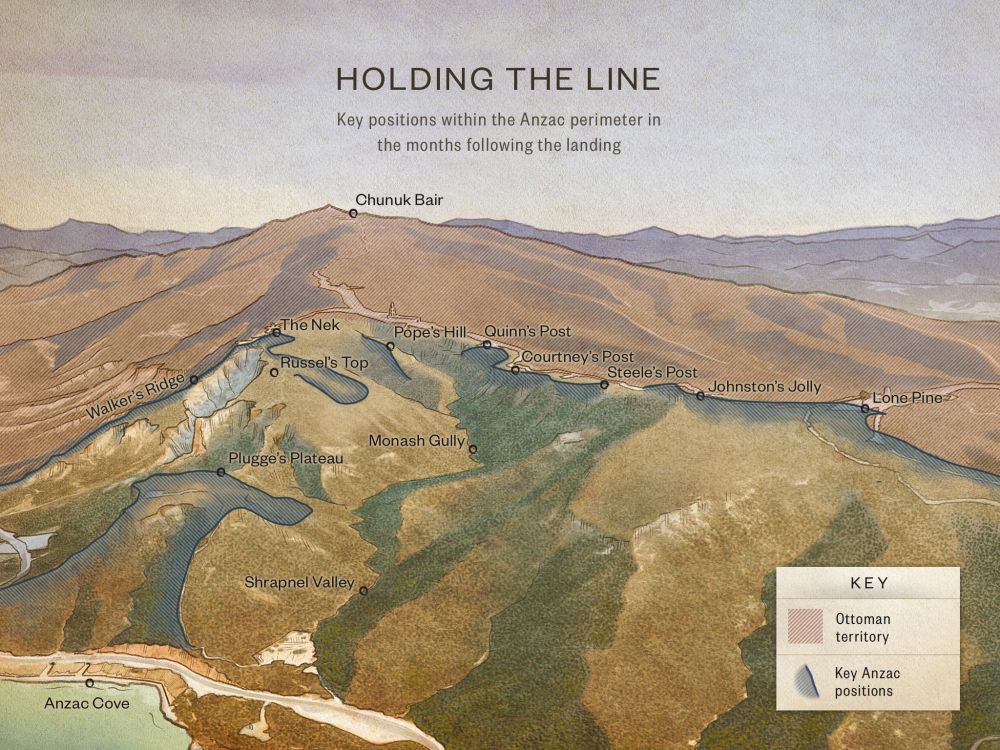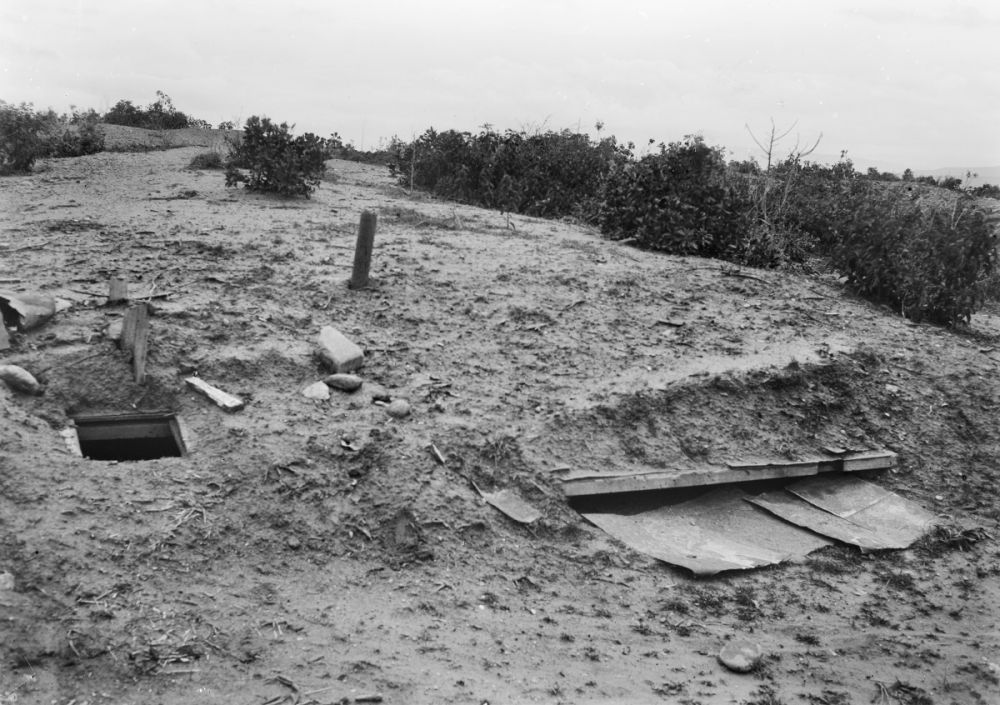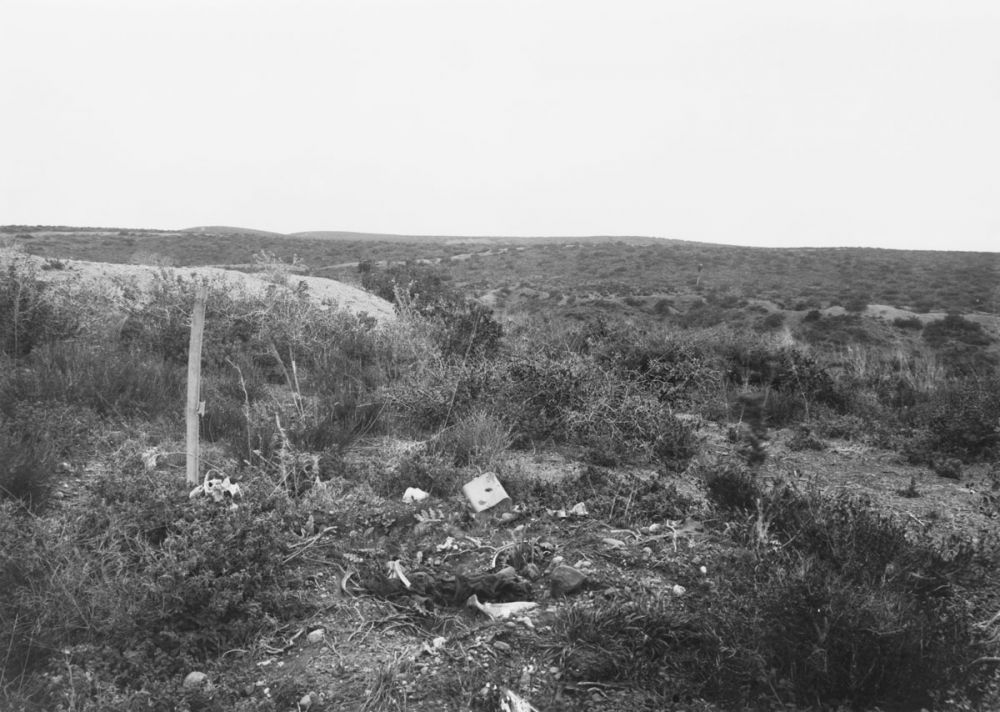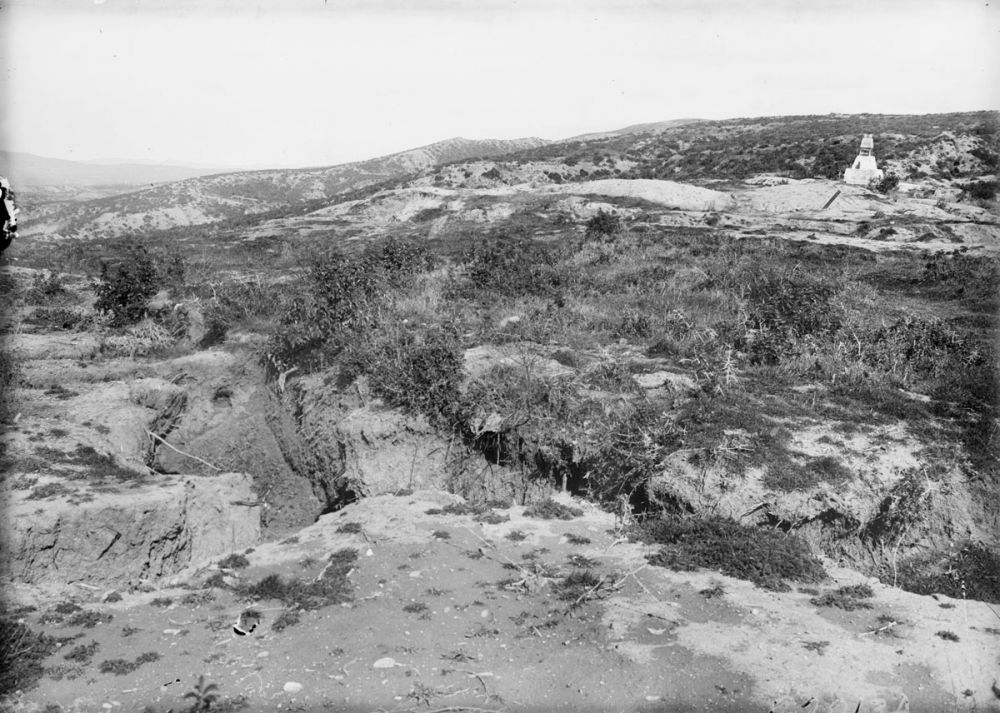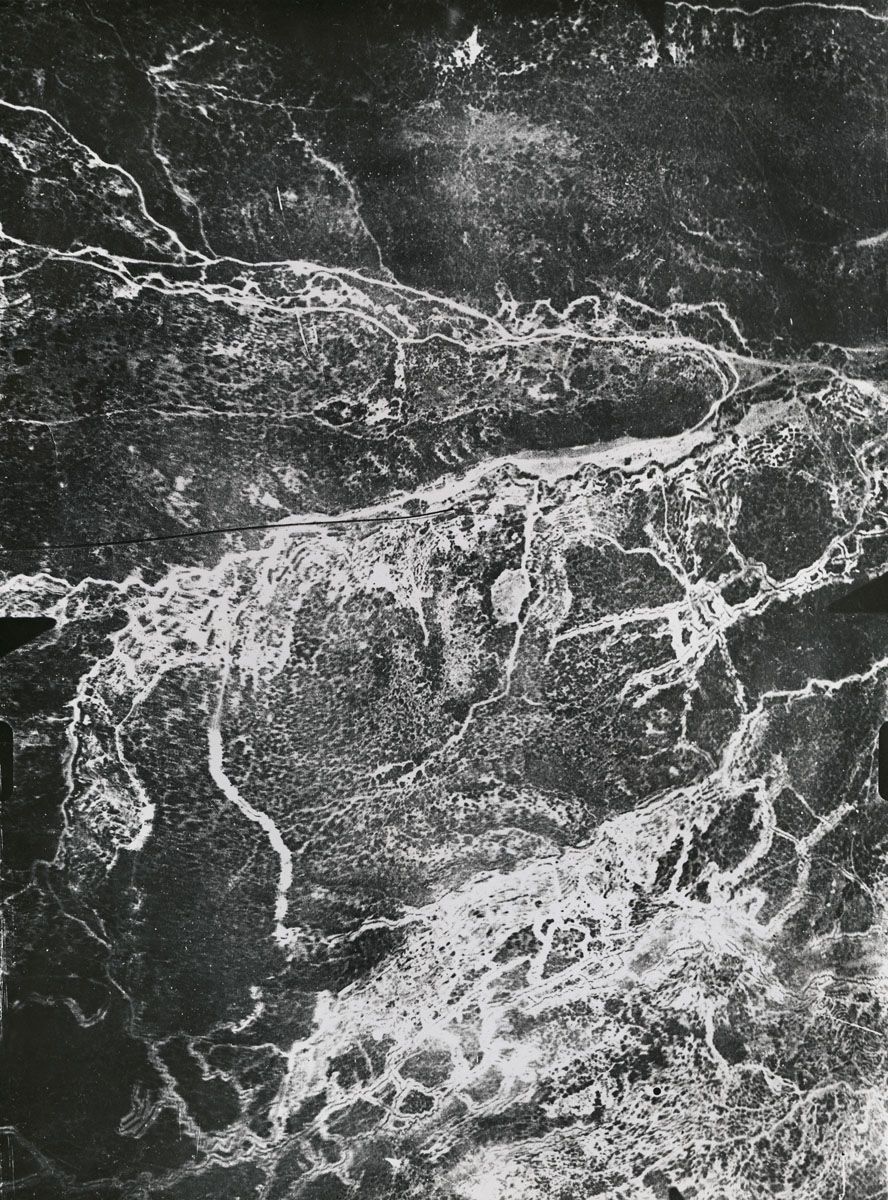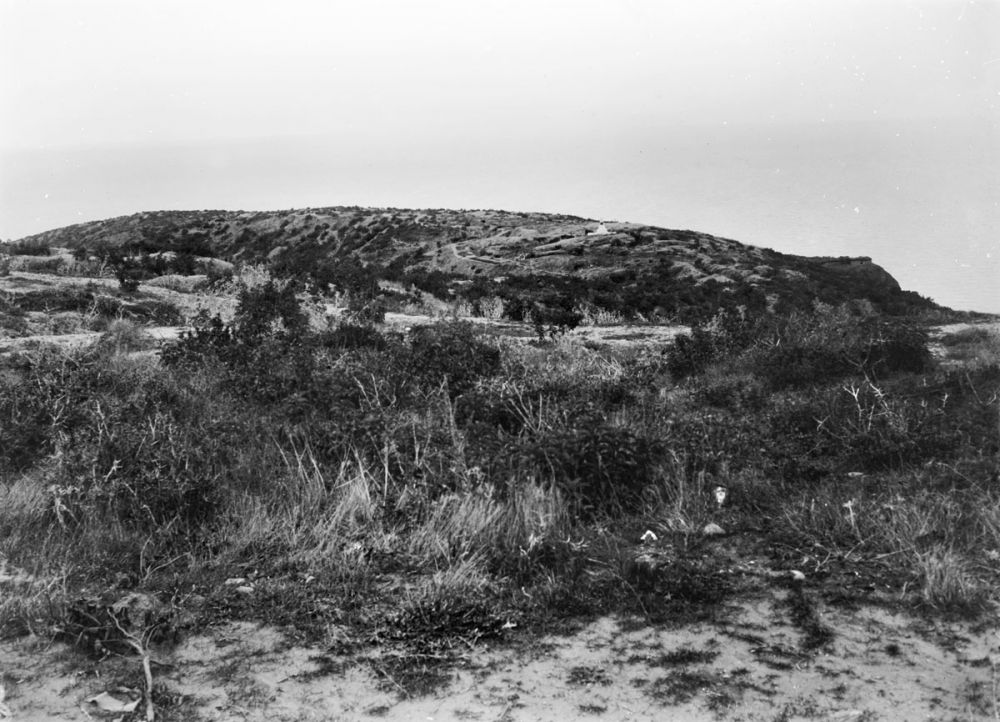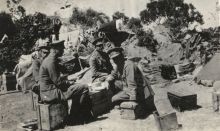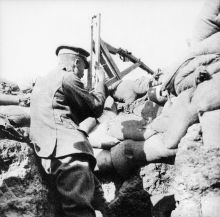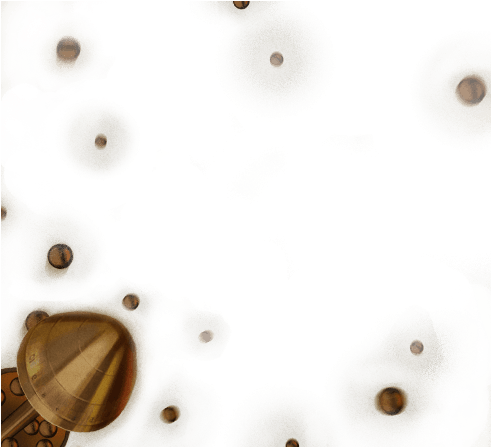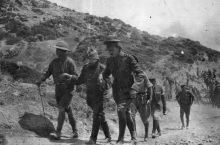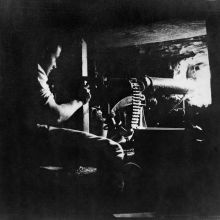Baby 700
You are standing on the hill Baby 700. This is where the most important battle was fought on 25 April 1915. Look to your right, and see the flag in the distance in the gap in the trees. That’s Chunuk Bair.
Just forward of where you’re standing, you can see that it starts to go downhill into a little gully before climbing up on to the next hill, which is known as Battleship Hill. It is in this gully where the infantrymen of the Auckland Battalion, led by a young Spencer Westmacott, linked up with the Australians on the left of the line on 25 April.
The New Zealanders were down in that gully in scrub like you see now. There were no pine trees, but this low scrub is typical of the vegetation in 1915. We were looking for the Australians and we found them on these forward slopes, but by that stage they were shot to pieces.
Almost all of the Australians had been killed or wounded because, at this time, coming down these slopes was the counterattacking Turkish 57th Regiment. That large, pyramid-shaped structure, with a flag that you can see behind you, is the memorial to that Turkish regiment.
Westmacott and his men went into the line here and were reinforced by other members of the Auckland Infantry Battalion. At the same time, the soldiers of the Canterbury Infantry Battalion under their commanding officer, Colonel McBean Stewart, were on the other side of the hill on the seaward slope. They were also coming to reinforce the Australians. This was the battle for Baby 700 on the afternoon of 25 April.
The Turkish commander, Mustafa Kemal, later known as Atatürk, was on Chunuk Bair. He pushed his 57th Regiment down towards where you are standing in order to push the New Zealanders off. The Turkish snipers just shot them to pieces, and there was a seesaw battle. The New Zealanders held it, were driven back, counterattacked, were driven back again, counterattacked – this happened five times. And then, finally, the New Zealanders were driven off Baby 700.
In the late afternoon, Mustafa Kemal’s 57th Regiment seized this hill, and small parties of Australians and New Zealanders ended up in Quinn’s Post and at the Nek. And it’s those two areas that became established as the Anzac frontline for the next nine months.
The Anzacs tried to take back Baby 700 in a major night attack on 2 May, but again failed to take the seemingly impregnable position.


